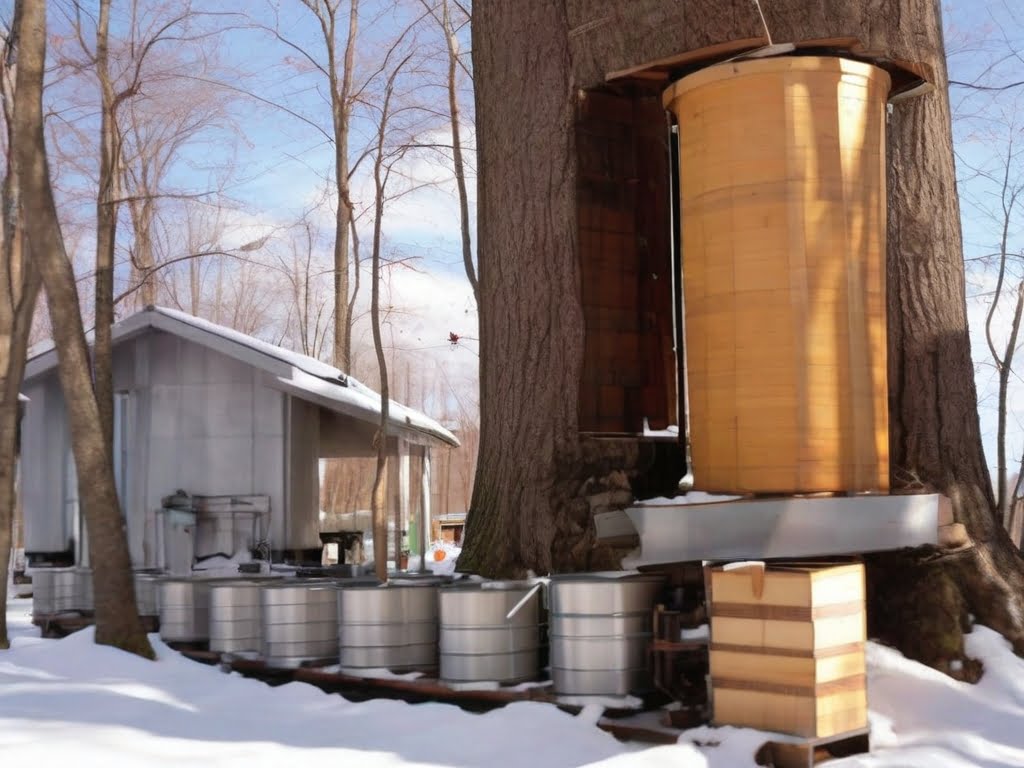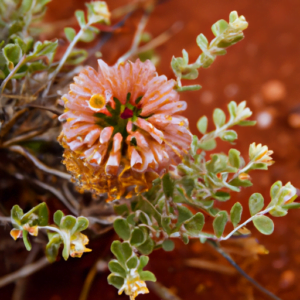Step into the enchanting world of maple syrup production and embark on a journey to discover the fascinating process behind this sweet elixir. From exploring rustic sugar shacks nestled in the heart of maple forests to indulging in mouthwatering tasting experiences, Maple Magic promises to transport you to a realm where nature’s finest flavors come alive. So grab your sense of adventure and immerse yourself in the captivating tale of how maple syrup is made, a journey that is sure to leave you craving for more.
Table of Contents
ToggleMaple Syrup Production Process
Maple Tree Tapping
Selecting the Right Trees
When it comes to maple tree tapping, choosing the right trees is crucial. Not all maple trees are suitable for tapping, so it’s essential to identify the species that produce the best-quality sap. The most common trees used for maple syrup production are sugar maple (Acer saccharum), red maple (Acer rubrum), and black maple (Acer nigrum). These trees have a higher sugar content in their sap, which results in a more flavorful syrup. It’s important to ensure that the trees are healthy and have reached a certain age before tapping them.
Tapping the Trees
Once you’ve identified the appropriate trees, it’s time to tap them. Tapping is the process of creating a small hole in the tree to extract the sap. This is done with the help of a tapping tool called a spile. The spile is inserted into the tree, and the sap starts flowing through it. It’s important to tap the trees at the right time — usually in late winter or early spring when the temperature fluctuates between freezing at night and thawing during the day. This temperature fluctuation allows for the sap to flow.
Gathering Sap
After tapping the maple trees, the sap starts to flow steadily. The sap is collected in various ways, depending on the scale of production. In small-scale operations, buckets are hung on the spiles to collect the sap dripping from the trees. In larger operations, a network of plastic tubing is used to collect the sap from multiple trees and direct it to a central collection tank. The collected sap needs to be transported to the sugar shack promptly to avoid spoilage. The time between sap collection and processing is crucial in maintaining the quality of the final product.
Maple Sap Boiling
Preparation for Boiling
Once the sap is collected, it’s time to begin the process of turning it into maple syrup. This process starts with the preparation for boiling. The sap is first filtered to remove any impurities or debris. The filtration is done to ensure a cleaner and clearer syrup. Once the sap is filtered, it is transferred to the evaporator.
Boiling Process
The boiling process is the heart of maple syrup production. The sap is heated in an evaporator, which removes the excess water and concentrates the sugars present in the sap. The boiling is done over a wood-fired or oil-fired evaporator. As the sap boils, the water content evaporates, and the flavors become more concentrated. The temperature needs to be carefully controlled throughout the boiling process to prevent scorching or overcooking the syrup. This process is what gives maple syrup its characteristic taste and consistency.
Classification of Maple Syrup
Maple syrup is classified based on its color and flavor intensity. The grading system varies between regions, but the general categories consist of Grade A, Grade B, and Grade C. Grade A syrup is further divided into several classes, such as Golden, Amber, Dark, and Very Dark. Each grade and class has its unique flavor profile and uses. The classification helps consumers choose the syrup that best suits their taste preferences.
Maple Syrup Filtering and Packing
Filtering the Syrup
After the boiling process, the maple syrup needs to be filtered to remove any remaining impurities. This is typically done using a series of filters to ensure the syrup is clear and free from sediment. The filtering process helps to improve the syrup’s visual appeal and shelf life. Filtering also helps enhance the syrup’s texture, making it smoother and more enjoyable to consume.
Packing and Storage
Once the syrup is filtered, it is ready to be packed and stored. The syrup is generally packed in glass or plastic containers, depending on the producer’s preferences and packaging regulations. Proper labeling is essential to provide consumers with information about the syrup’s grade and quality. Maple syrup should be stored in a cool, dark place to maintain its flavor and quality. When stored correctly, maple syrup can have a shelf life of up to several years.
Factors Affecting Maple Syrup Production
Climate and Weather Conditions
Climate and weather conditions play a significant role in maple syrup production. The ideal climate for maple syrup production is one with cold winters and warm, sunny spring days. Freezing temperatures at night and thawing temperatures during the day create the sap flow necessary for tapping. If the weather doesn’t cooperate, and the temperature fluctuation is not optimal, maple syrup production may be negatively affected.
Geographical Location
Geographical location also influences maple syrup production. Different regions have varying climates and tree species, resulting in variations in flavor and quality of the syrup produced. For example, Vermont is famous for its maple syrup production, known for its rich flavor and amber color. Understanding the specific characteristics of each region helps producers determine the best practices for maximizing maple syrup production in their area.
Health of the Maple Trees
The health of the maple trees is crucial for successful syrup production. Healthy trees produce more sap, which leads to higher syrup yields. Regular tree maintenance, such as pruning and pest control, helps maintain the health and vitality of the maple trees. Adequate tree nutrition, proper tapping techniques, and minimizing stress factors all contribute to healthy trees and increased syrup production.
Traditional vs. Modern Maple Syrup Production
Traditional Methods
Traditional maple syrup production relied heavily on manual labor and older equipment. It involved tapping trees with a hand drill, collecting sap in buckets, and boiling it in large open pans over an open fire. Traditional methods required constant monitoring and physical labor throughout the process. While these methods may be more time-consuming, they have a certain charm and are still utilized by some smaller-scale producers today.
Modern Methods
Modern maple syrup production has seen significant advancements in technology and efficiency. Vacuum systems are used to enhance sap flow, making the collection process more efficient. Plastic tubing networks have replaced buckets, allowing for automated sap collection. Reverse osmosis systems have revolutionized the industry by removing water from the sap before boiling, reducing the boiling time and energy consumption. Evaporators have become more advanced, incorporating temperature controls and automated features. These modern methods have greatly increased productivity and streamlined the maple syrup production process.
Economic and Environmental Impacts
The shift from traditional to modern maple syrup production methods has had both economic and environmental impacts. Modern methods have increased the production capacity, allowing for larger-scale operations and improved profitability. The efficiency gains have made maple syrup more accessible and affordable for consumers. However, there are also concerns about the environmental impact of modern methods, such as increased energy consumption and the use of plastics in tubing systems. Striking a balance between economic efficiency and environmental sustainability is a constant challenge for the industry.
Health Benefits of Maple Syrup
Nutritional Value
Maple syrup offers several nutritional benefits compared to other sweeteners. It contains essential minerals such as calcium, potassium, iron, and zinc. It also provides small amounts of vitamins like thiamine, riboflavin, and niacin. While maple syrup is still a sweetener with calories, it does offer some nutrients that other sweeteners lack.
Antioxidant Properties
Maple syrup is known for its antioxidant properties. It contains a variety of antioxidants, including phenolic compounds and flavonoids. These antioxidants help protect the body against oxidative stress and reduce the risk of chronic diseases.
Potential Health Effects
While more research is needed, some studies suggest that maple syrup may have potential health benefits. It has shown promise in managing blood sugar levels, reducing inflammation, and supporting gut health. However, it’s important to note that maple syrup should be consumed in moderation and as part of a balanced diet.
Maple Syrup Grades and Flavors
Grading System
Maple syrup is graded based on its color and flavor intensity. The grading system helps consumers choose syrup that aligns with their taste preferences. Grade A syrup is further classified into different classes, with each class offering a distinct flavor profile. The lighter syrups have a delicate taste, while the darker ones have a more robust and intense flavor.
Different Flavor Profiles
Maple syrup’s flavor can vary depending on factors such as tree species, geographical location, and production methods. Lighter syrups often have a more subtle, buttery flavor, while darker syrups tend to have a stronger, more robust taste. The flavor profiles can range from floral and vanilla notes to caramel and smoky undertones. Exploring different grades and flavors is part of the maple syrup experience.
Maple Syrup Uses in Culinary
Sweetening Agent
Maple syrup is a versatile sweetening agent that can be used as a healthier alternative to refined sugars. It can be used as a topping for pancakes, waffles, and French toast. It can also be drizzled over oatmeal, yogurt, or fresh fruit for a natural sweetness. Maple syrup can be an excellent substitute for sugar in baking recipes as well, adding a unique flavor to cakes, cookies, and muffins.
Cooking and Baking
Maple syrup’s rich, distinct flavor can be used to enhance a wide range of dishes. It can be used as a glaze for roasted meats, adding a caramelized sweetness. It can be incorporated into marinades, dressings, and sauces to enhance the flavor profile. Maple syrup can also be used as a natural sweetener in homemade granola or energy bars, providing both sweetness and binding properties.
Different Recipes
Maple syrup is a staple ingredient in various recipes, both sweet and savory. From maple-glazed salmon and roasted vegetables to maple custards and pies, the possibilities are endless. It can be used in beverages like maple-infused cocktails or added to coffee and tea as a natural sweetener. The versatility of maple syrup allows for experimentation and creative culinary endeavors in the kitchen.
Maple Syrup Around the Globe
International Maple Syrup Production
While Canada and the United States are the primary producers of maple syrup, other countries also contribute to its global production. Countries like Sweden, Switzerland, and Japan have established maple syrup industries, although on a smaller scale. This international production adds diversity to the global maple syrup market and offers unique flavors and production methods.
Regional Differences in Production and Consumption
Within Canada and the United States, there are regional differences in maple syrup production and consumption. For example, Quebec in Canada is the largest maple syrup producer in the world, known for its extensive maple forests and production methods. In the United States, Vermont is renowned for its high-quality maple syrup, while other states like Maine and New Hampshire also contribute significantly to the industry. Each region has its own traditions, flavors, and cultural significance associated with maple syrup.
Cultural Significance
Maple syrup holds cultural significance in many regions where it is produced. It has deep-rooted connections to the Indigenous peoples of North America, who have been tapping maple trees for centuries. Maple syrup festivals and events celebrate the heritage and traditions associated with maple syrup production. These cultural celebrations highlight the importance of maple syrup as a symbol of community, history, and pride.
Sustainable Practices in Maple Syrup Production
Forest Management
Sustainable forest management is essential for the long-term viability of maple syrup production. It involves responsible practices such as selective logging, reforestation, and preserving biodiversity. Timber harvesting is carefully coordinated with maple syrup production to ensure the health and sustainability of the trees. Well-managed forests provide a healthy ecosystem for maple trees, contributing to the overall sustainability of the industry.
Certifications and Standards
Certifications and standards play a crucial role in promoting sustainable maple syrup production. Organizations such as the Forest Stewardship Council (FSC) and the Sustainable Forestry Initiative (SFI) provide guidelines for sustainable forest management. Maple syrup producers can obtain certifications that demonstrate their commitment to sustainable practices. These certifications assure consumers that the maple syrup they purchase has been produced in an environmentally responsible manner.
Promoting Biodiversity
Maple syrup production can have positive impacts on biodiversity when practiced sustainably. Well-managed maple forests provide habitats for various plant and animal species. By preserving the ecological balance, maple syrup producers contribute to the overall health and diversity of the forest ecosystem. This promotes the well-being of not only the maple trees but also the surrounding flora and fauna.
In conclusion, maple syrup production is a fascinating process that combines tradition, innovation, and sustainability. From selecting the right trees and tapping them to boiling the sap and filtering the syrup, each step contributes to the final product’s quality and flavor. The health benefits, diverse flavors, and culinary uses make maple syrup a beloved ingredient around the globe. Whether it’s the traditional methods passed down through generations or the modern advancements that have increased efficiency, maple syrup production continues to evolve while maintaining its cultural significance and environmental responsibility. So next time you enjoy a stack of pancakes drizzled with maple syrup, remember the magic that goes into every drop.





